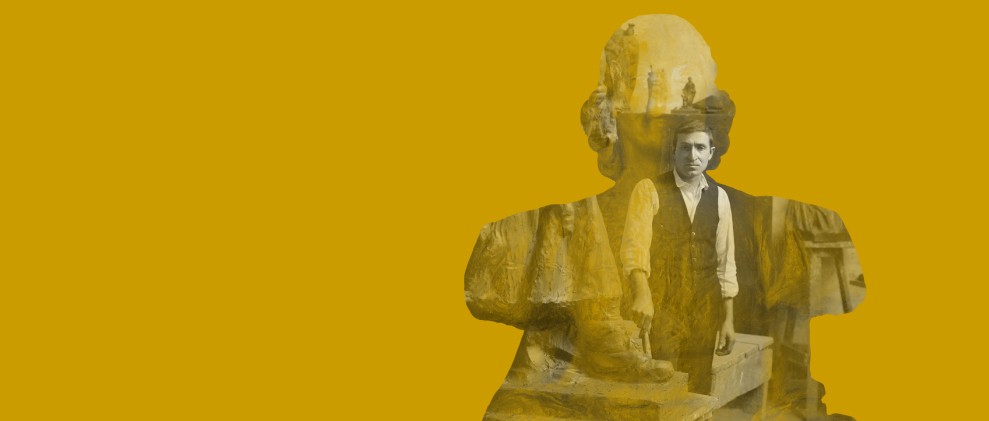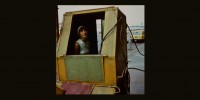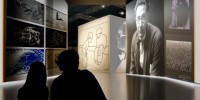Francisco Asorey, A Necessary Reappraisal is an exhibition that delves from a contemporary perspective into the complex creative world of what is likely the most prominent sculptor from Galicia and one of the renovators of Spanish sculpture in the 20th century. The choice of Francisco Asorey as the artist honored by the Royal Galician Academy of Fine Arts on the 2024 Arts Day makes this project possible within the Museo Centro Gaiás program, continuing a key line of work to highlight essential figures in the history of contemporary Galician art.
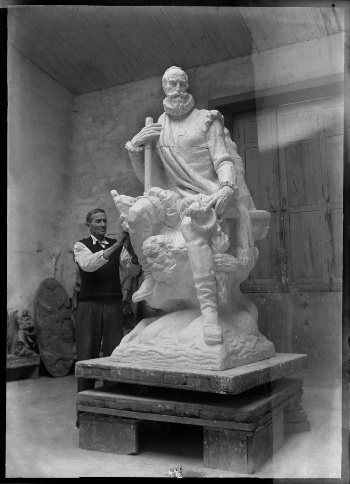
Curated by Miguel Fernández-Cid and coordinated by Carmen Asorey — the artist’s granddaughter and a key figure in promoting his life and work — Francisco Asorey, A Necessary Reappraisal brings together a selection of the sculptor’s most important works. These range from early pieces where his first aesthetic choices are evident, to wooden sculptures that develop an iconography rooted in Galician popular tradition with a distinctive use of polychromy, as well as his monumental works found throughout Galicia and beyond.
In total, around fifty sculptures and about ten plaster casts are on display, along with drawings, audiovisuals, historical documents, work tools, and ceramics that helped popularize some of his most significant creations — all contributing to a comprehensive contextualization and recognition of Asorey’s artistic and historical relevance.
The exhibition features works from numerous museums, cultural and religious institutions, including the Museo Nacional Centro de Arte Reina Sofía, the Museo de Pontevedra, the Museo Provincial de Lugo, the Museo de Belas Artes da Coruña, and the University of Santiago de Compostela, as well as private collections in Gernika, Barcelona, and Madrid, among others.
The Keys to a Sculpture Innovator
The exhibition layout is organized into thematic sections, allowing a deeper understanding of Asorey’s concerns, aesthetic interests, stylistic evolution, and creative process. Each area serves as a spotlight on pivotal moments in his career: civil monuments, religious sculpture, portraits and the use of colour in stone, the development of a new polychromy technique, woodwork, and the representation of Galician identity through the female figure.
Among the standout pieces are some of his earliest notable works, such as Lo Jondo (1914) and Cabaleiros Negros (1915); the sculpture of Saint Francis that earned him a first medal at the 1926 Spanish National Exhibition; and female figures like Naiciña (1921), Ofrenda a San Ramón (1923), and O Tesouro (1924), in which he synthesizes the values of Galician popular culture and celebrates rural resilience. Also featured is the spectacular Cristo de Moià (1952), a mature work that draws from Romanesque values to present a disturbing yet contemplative vision of suffering and immortality.
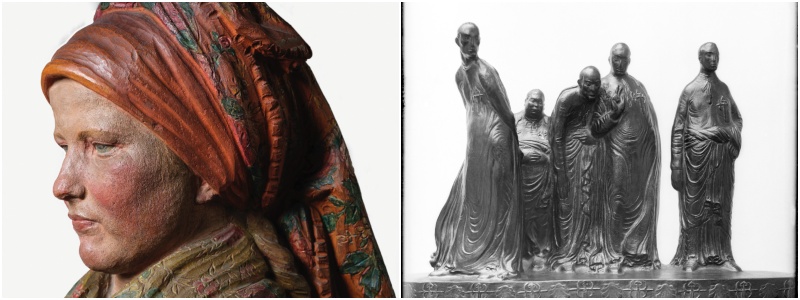
Asorey: Between the Popular and the Universal
After studying in Barcelona, Barakaldo, and Madrid, Asorey returned to Galicia and settled in Santiago de Compostela. From his workshops on Caramoniña and Santa Clara streets, he became a kind of immobile, introspective traveler, with sculpture as his axis and an outward-looking gaze. Asorey embodies the perfect symbiosis between Galician cultural tradition and the ambition of a universal art. His work connects rural and maritime Galicia with major 20th-century artistic movements, integrating social realism, symbolism, and the Galician Baroque tradition.
He established ties with contemporary intellectuals, writers, and poets such as Ramón Cabanillas, Antón Vilar Ponte, Castelao, and Valle-Inclán, many of whom were linked to the Irmandades da Fala and the Xeración Nós. Although he was not interested in political action, his commitment to Galician cultural values and to education as a means of progress shaped their affinities. This connection is reflected in the exhibition through Asorey’s sculptures and plaster casts of writers, as well as books by and about these figures.
Asorey enjoyed widespread popularity during his lifetime, receiving both critical acclaim and public recognition thanks to reproductions of his work in ceramics, prints, and postcards featuring his monuments and notable pieces — a form of dissemination that was also used at the time for works by Velázquez or Goya.

